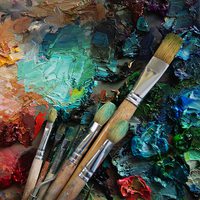In practice, there is a huge variety of types, styles, genres and areas of fine art. Often they closely overlap with each other and do not have clearly defined boundaries. Moreover, one genre often gives rise to subgenres, styles - new directions of painting, and the techniques used by artists go from pure to mixed and vague. So how to understand all this variety of creative directions, clearly structure them and not get completely confused in the definitions? In this article, we will consistently reveal the main features of this topic and try to put everything on the shelves as much as possible.
Content
What is fine art
Fine Arts (FINE) is artistic creativity in general, i.e. a general class of spatial arts that combines the following six popular creative directions: painting, sculpture, graphics, architecture, design (aka arts and crafts) and photography. One of the most difficult and pressing questions of our time is how to define art in everyday life? To do this, you should start with its purpose, i.e. understand why ISO exists in principle. The main goal of fine art is the self-expression of the author and the emotional impact on the viewer. And if there is a goal, then there are qualitative signs by which it can be recognized in the outside world, namely:
- Sensibility - through them, works of art are created and perceived.
- Image - a form of knowledge of the world is transmitted to the viewer in the form of specific images that are understandable, and sometimes, on the contrary, specially hidden from the observer.
- Subjectivity is an individual author's vision of the current reality.
- Completeness - the presence of a finished composition, the finalization of the work.
- Exclusivityis a unique original that is difficult or worthless to duplicate.
Any object of observation that clearly answers all five of the above points is a work of art. The most obvious and illustrative of them: paintings, sculptures, poems, films and books.
Thus, all types of fine arts visually reproduce the objectively existing qualities of the real world: volume, colors, space, material form of objects, light and air. For ISO not only the fixation of a visual image is available, but also the temporal development of events, a more or less detailed narrative, dynamic action, as well as the expression of subjective experiences, fantasies and abstract ideas.
Types of fine art
We have analyzed what is fine art, but how do its types differ from each other. One of the most important criteria for their correct final definition is volume. It is also often referred to as three-dimensionality or flatness. For clarity, it is volume that determines the distinction between the two main types of fine art, which has developed in the distant past - painting and sculpture. The first is two-dimensional, the second is three-dimensional. Below we consider the main types of fine art:
- Painting is the art of painting with paints on a flat two-dimensional surface.
- Graphics - work with lines and strokes without applying paints on the plane.
- Sculpture is three-dimensional creativity carried out by carving, modeling and casting.
- Architecture is the creative construction of buildings and structures.
- Design is the decoration of various objects.
- Photography - creating a photograph that reflects the photographer's creative vision of the world

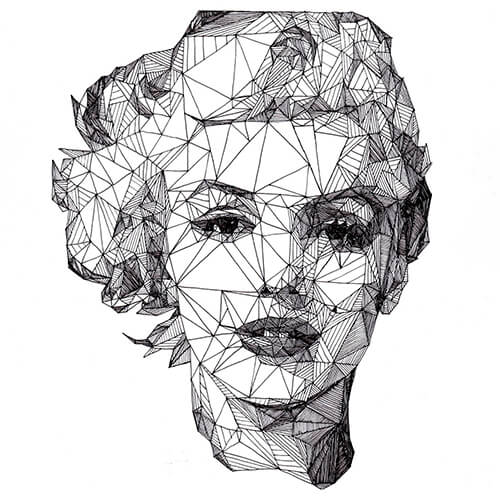
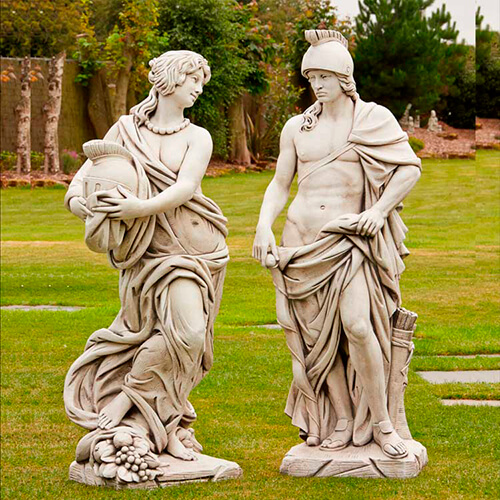
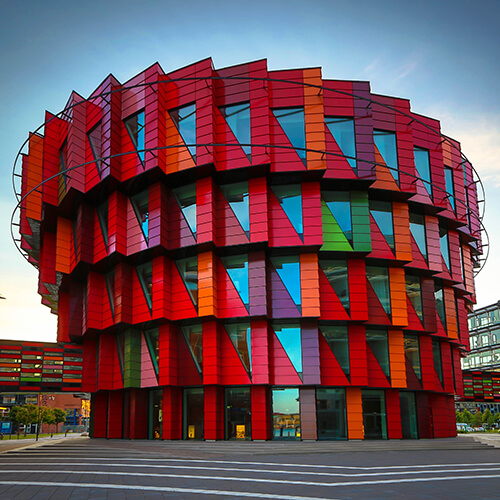
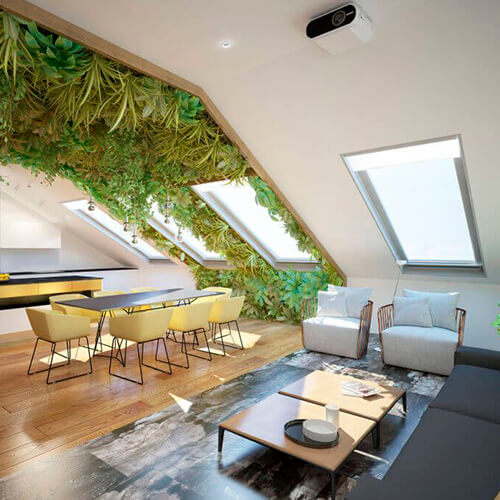

On our site, the main area of fine art is painting by contemporary artists of St. Petersburg. Therefore, it is on it that we will dwell further in the text and tell you what it is and how to work with it correctly.
What is painting in modern art
Painting is a type of visual art that is a way of conveying visual images by applying paint to a two-dimensional surface. This method allows the artist to capture the world around him or his fantasies, which are subsequently available to the viewer. Its main expressive means is color, which affects the general perception of the picture by the viewer, allowing you to pay attention to certain details and enhances the emotional component of the work. To do this, the artist often uses expressive shades, tones and shadows, necessary to accurately convey the idea by mixing colors on the palette. In addition to color, the most popular methods of artistic expression in painting include: drawing, line and composition. The result is the final image obtained on a certain surface, chosen as the basis by the author. Depending on the technique of execution, objects are divided into paintings, frescoes, icons, rock and miniature.
Interesting fact: painting rightly claims to be the oldest art form. It has evolved over the centuries from Paleolithic rock paintings to the latest trends of the 21st century. It originated almost with the advent of mankind. Ancient people painted everything they saw in their environment: fellow tribesmen, animals, nature and hunting scenes. For painting, they used primitive paints made from available natural materials. These were earth paints, charcoal, black soot, herbal pomace and clay. Brushes were made from animal hair, or simply painted with fingers.
Throughout history, the ways of drawing and the materials they use have changed invariably. New technologies and changing tastes have led to the fact that the paints and drawing techniques used by the authors have been constantly improved. Many of us are familiar with watercolors, oils and acrylics, but artists use a much larger range. Some drawing techniques are easy for artists of all levels to master, while others may require more advanced technical skills.
Popular painting techniques
Painting technique is a certain sequence and set of techniques for using artistic materials and means in the manufacture of art objects. There are the following techniques:
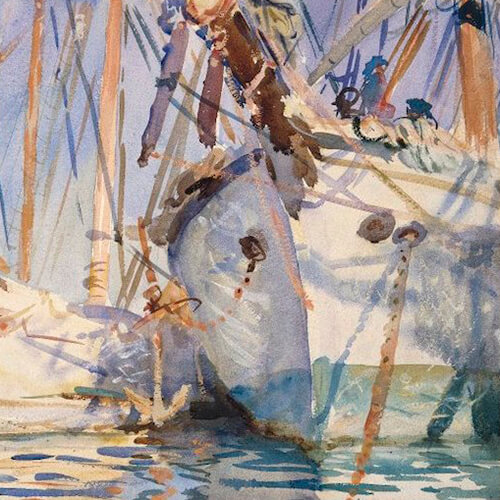
Watercolor - as a rule, it is drawn on paper from pigments suspended in a water-based solution. Known for its translucent layers, watercolor paint remains soluble even after drying. This means that the authors can make some corrections even when the painting has dried, but it also means that the finished work must be carefully protected from external influences. There are many watercolor techniques that artists use to create a variety of art styles, from realistic portraits to blurry landscapes. While paper is the most common substrate, watercolor can also be used on surfaces such as fabric, wood, leather, and parchment.
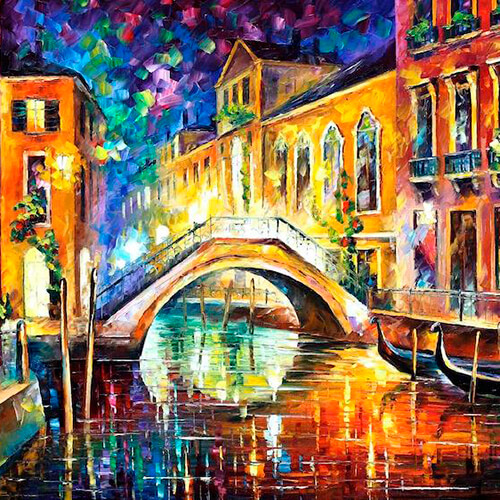
Oil - For centuries, artists have used oil paint to create their masterpieces. This slow drying medium consists of colored pigments suspended in oil. Due to the long drying time, you can not rush to work. Oil paint is often used to create wonderful textural effects due to its thick consistency. Although it can be messy to work with and care must be taken when working with media containing toxic elements, it is still loved by craftsmen for the rich colors it produces. Therefore, it is not surprising that this is one of the most popular types of painting.
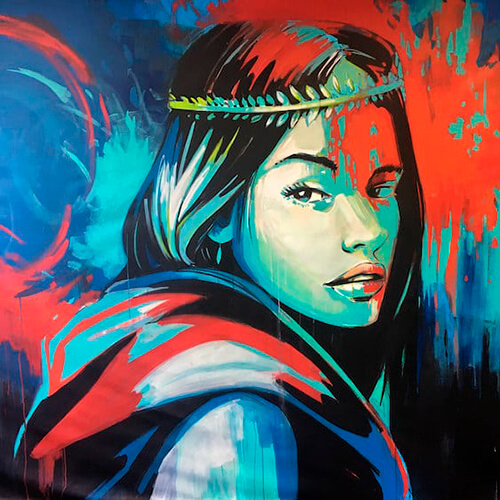
Acrylic - There is a wide range of acrylic paints in terms of texture and dry time. This water-based paint dries quickly, is non-toxic and economical, often making it the preferred choice for artists of all skill levels. Over time, it holds up better than oil paint, as it does not crack or turn yellow. There are countless acrylic paint techniques, and by combining paint with a variety of mediums, artists gain flexibility in their final form. While acrylic is water resistant when completely dry on canvas, its water-soluble nature makes it easy to clean when wet.
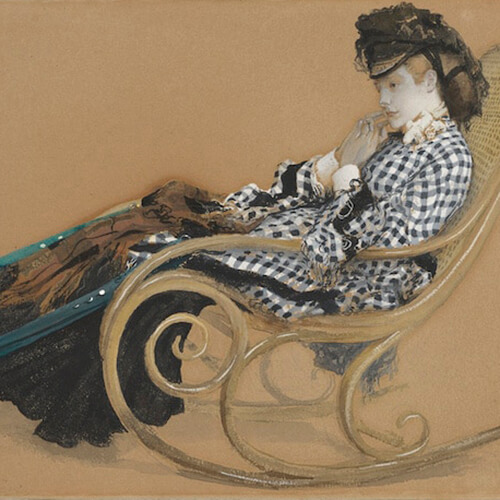
Gouache - although gouache is similar to watercolor in that it can be rewetted, this type of paint becomes matte when dry and is a heavier fraction due to its composition chalk. Gouache also has characteristics similar to acrylic in that it is an opaque paint. It is often used in conjunction with watercolor, and because it is soluble in water, varnish is needed over it to seal the finished painting. A newer option is acrylic gouache, which uses an acrylic-based binder that allows the paint to become water-resistant as it dries.
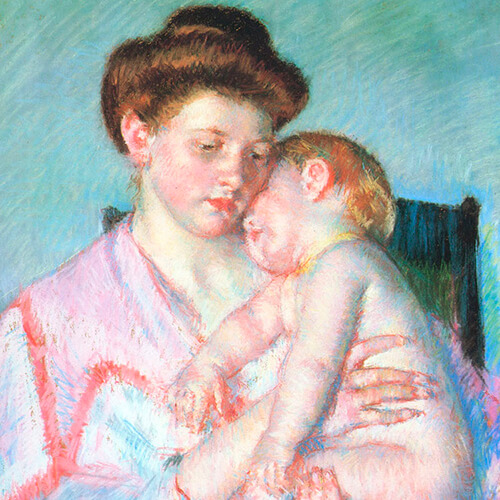
Pastel - Sometimes known as "dry painting", the use of pastels has been popular since the 16th century. Their stick shape and lack of dry time make them an easy and portable solution for artists. The most popular pastels, known as soft pastels, contain chalk, but waxy oil pastels are also available. Colors are usually mixed right on the substrate, and if you're looking for a watercolor-type effect, there are also water-soluble pastels. These paintings are fragile as the pigment can flake off the surface, so they should be framed under glass.

Fresco is an ancient technique that is perhaps best known for the iconic ceiling of the Sistine Chapel by Michelangelo. Buon's fresco involves mixing the pigment with water and applying it to a still wet layer of plaster. The water used to finish the ceiling and walls helps the pigment blend into the plaster, creating a strong bond when it dries. Buon fresco - or a real fresco - requires artists to work quickly, since after the plaster has dried, the surface can no longer be painted. Another method, fresco secco, requires a binder such as egg, glue or oil to adhere to the dry surface of the plaster. This method works better on a rougher surface but is less durable.
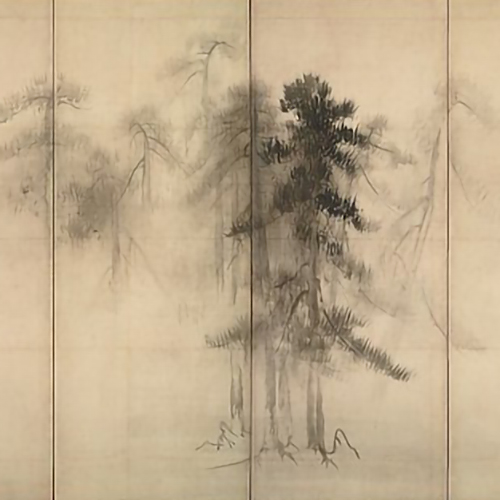
Ink - also known as literary painting, originates in China and East Asia. The use of black ink in calligraphy led to the popularity of brush painting using the same ink. Artists achieve different tones by varying the amount of ink on the brushes and the pressure with which the stroke is applied. The strokes are carefully studied, calligraphy masters perfect their strokes over the years. Although color ink is widely available today, black is still the most commonly used.
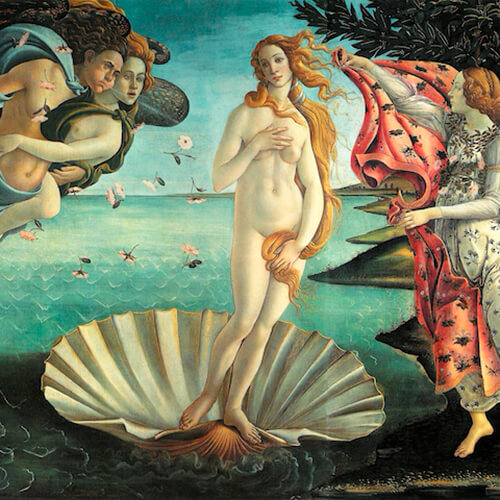
Tempera - although less commonly used today, tempera is one of the oldest types of painting and was traditionally created by grinding pigments into a binder. The most common type of tempera is egg tempera, which typically uses egg yolks mixed with a solution of vinegar or water as the binder. Tempera was quite popular until oil paint became widely used in the 16th century. The quick-drying paint is applied in thin transparent layers and is characterized by the absence of color loss over time. Tempera has continued to be used by select artists (Leonardo da Vinci) throughout history, although it is known to most people from medieval and renaissance art. Today it is still used in the Greek and Russian Orthodox Church for religious iconography. In the US, poster ink is sometimes referred to as tempera, although the binders vary.
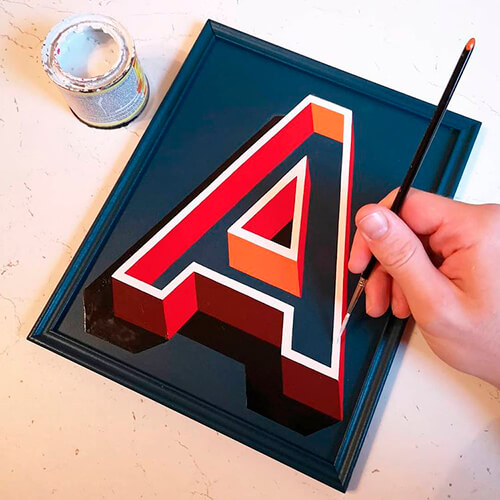
Enamel - This oil paint is most commonly used by sign artists or for decorative painting and pinstriping. After drying, it forms a hard, glossy, weather-resistant surface. Enamel can be used on a variety of surfaces such as glass, ceramic, metal, wood and canvas. Due to its toxicity, it is always recommended to work in a well-ventilated area while wearing a mask. There are also water-based enamels that can be used on heavier paper such as cardboard. In addition to decorative work and sign painting, many great artists have used enamels in their work. It is known that Picasso and Jackson Pollak used commercial enamel paints in their works.
Varieties of painting
In the traditional history of art, it is customary to distinguish several main varieties of painting:
- Easel - made not on the wall, but on a portable stand, for example, on a panel or canvas. Paintings are the most striking example of it. It is likely that it was known to the ancient Egyptians, and the 1st century AD Roman scholar Pliny the Elder refers to a large panel placed on an easel. However, it was only in the 13th century that easel painting became relatively common, finally displacing fresco or wall painting in popularity.
- Monumental - large-format painting, used to decorate the interiors and exteriors of architectural structures (painting walls, ceilings). This is a special section of fine art, characterized by a plastic or semantic load of an architectural work and its ideological content. The word "monumental" comes from the Latin "moneo", which means "to remember". And no wonder, because this type of creativity is one of the oldest on earth!
- Decorative is important in architecture, where it is used to decorate both the exterior and interior of buildings. The composition may correspond to the architectural structure of the building, emphasizing various elements of the design, or, conversely, tends to hide the architectonics (for example, tapestry painting evenly covers all architectural elements). The painting is applied directly to the wall, arch or any other part of the building, or is done on canvas, which is subsequently attached to the wall or ceiling. The most commonly used are fresco, tempera, adhesive paints and, to a lesser extent, oil paints. Since the late 19th century, silicate paints have been popular. Received special distribution in the classic decorative painting of the late 18th - early 19th centuries.
- Theatrical-decorative - includes general disciplines covering almost the entire spectrum of painting and craft techniques. An experienced stage designer or decorator must be skilled in landscape, figurative, and faux finishes, as well as be a versatile craftsman working with a variety of media: acrylic, oil, and tempera paint. The artist may also be proficient in three-dimensional skills such as sculpting, plastering, and gilding. In practice, the decorator receives guidance from the theater artist and, in some cases, the designers draw their own designs.
- Miniature - products have a height of three to twenty-five centimeters and are written in watercolor or gouache on parchment, enamel, ivory or playing cards. In the West, miniature arose during the Renaissance from the medieval practice of illuminating (decorating and illustrating) handwritten books. The heyday of the miniature came in the sixteenth and seventeenth centuries. They were often encased in jeweled cases and worn as personal adornment as a sign of political or romantic allegiance to the person portrayed.
- Iconography - is a religious image painted on wooden panels, usually linden or pine. Their production is a long and complex process. A layer of linen fabric impregnated with sturgeon glue is applied to the canvas. The earth is made of chalk mixed with fish glue - this is gesso (soil). Up to ten layers of gesso are applied over the canvas or canvas. The outline of the composition is cut out on gesso with the point of a needle, often according to an icon painting textbook.
Genres of painting
All paintings that exist today can be divided into several separate genres, which have their own characteristics in terms of their subject matter and depiction technique. Consider the main ones in order to have a correct idea of the structure of the canvases. So, among modern genres, it is customary to distinguish the following areas:
Animal
Animalistic genre (animalism) - its main motive is the image of animals. In addition to painting and graphics, animalism is often used in sculpture, photography, arts and crafts, and literature. The animalistic genre, as confirmed by archaeological excavations and research by historians, is the most ancient of all genres mastered by man. It is the images of animals that are found on the most ancient rock paintings, on household items, jewelry, amulets, weapons, and so on. Ancient animalism is often referred to as the "animal style". It is characterized by ornamental and stylized images of animals, which sometimes looked very abstract, and sometimes very realistic and believable. Currently, animalism is no less popular and in demand among connoisseurs, because the animalistic genre is the artist's admiration for the outside world and the abundance of life. Therefore, many masters turn to images of wildlife and, in particular, animals, birds, amphibians, reptiles, fish and insects.
Battle
The battle genre (from the French "bataille" - battle) is dedicated to the themes of war and military life. The main place in it is occupied by scenes of land and sea battles, as well as military campaigns. The battle direction is characterized by the desire to capture a particularly important or characteristic moment of the battle, to convey its pathos, the heroism of the war, and often to reveal the historical meaning of military events, which somewhat blurs the boundaries between it and the historical genre. The activity of battle artists, constantly associated with the activities of the army and navy, contributed to the expansion of the scope of battle battles, supplemented by scenes of military life from campaigns, barracks and camps, as well as generalized images of soldiers, front-line sketches, etc. The progressive trend in the development of battleism in the 19th-20th centuries is associated with a realistic disclosure of the social nature of wars and the role of the people in them, with the exposure of unjust aggressive battles, the glorification of national heroism in revolutionary and liberation wars, and with the education of civil patriotic feelings among the people.
Household
The everyday genre is devoted mainly to the depiction of the everyday, everyday life of a person, both private and public. The first everyday scenes are already found in primitive rock paintings, frescoes, and even on the walls of ancient Egyptian and Etruscan tombs. They depicted scenes of plowing and gathering fruits, hunting, fishing, dancing and tribal feasts. Everyday painting originated in the Renaissance: legendary events were often transferred to the canvas and saturated with many everyday details.
Interior
Interior (from the French "intérieur" - internal) - a genre in which the subject of the picture is the image of the interior of the decoration or room. An independent interior genre was formed in the 17th century in Holland.
Ippian
The main motif of the Ippian genre (from the Greek "hippos" - horse) is the image of a horse. Since ancient times, these animals have attracted the attention of artists for their appearance, speed, grace, intelligence and disposition. The art of depicting horses reached its peak in the 18th and 19th centuries, when, along with genre and battle works, including generalized images of horses, animal painters began to create portraits of famous horses and trotters, achieving documentary similarity. Great Britain is considered the historical birthplace of "equestrian painting" - here at different times many painters specialized exclusively in images of horses. But in Russia they were very fond of this topic. We had our famous animal painters, and the names of the classics - Nikolai Sverchkov, Pyotr Klodt, Pyotr Sokolov, Franz Roubaud, Evgeny Lansere, Pyotr Kovalevsky, Nikolai Samokish are widely known throughout the world.
Historical
A genre that was very influential from the middle of the 15th century to the end of the 19th century. A historical picture was usually understood as an important event or action in which several people or groups of people participated. These events could be both historical, religious or mythical. History painting has long been considered the highest and most complex genre due to its association with a powerful idea and the ability to portray the public in lofty colors and virtues. While the popularity of history painting has waned since the 19th century, some contemporary artists are still involved in the genre, often trying to update or revisit its dominant themes and ideas.
Still life
Still life is a genre in which artists depict everyday and inanimate objects, such as household items and gifts of nature. The genre itself established itself in the 17th century in Holland, quickly gaining interest among art connoisseurs, and soon became widespread in Western Europe. naturists depicted fruits, dishes and flowers, depicting them in bright colors and colors. Still life is not characterized by mobility, all objects are presented in close-up and depicted on the canvases as detailed as possible. Idleness, monumentality, static and symbolism - these are the main characteristics of this genre throughout its existence. The word "still life" from French means "dead nature". Many Russian and foreign artists gave obvious preference to still life in a number of their paintings. Another striking example of this genre is the painting by Pablo Picasso "Decanter and Cups", Isaac Levitan's "Cornflowers", Vincent van Gogh's "Sunflowers in a Vase" and Edouard Manet's "Basket of Fruit".
Nu
Nude (from the French "nudité" - nudity, nudity) is an artistic genre depicting the beauty and aesthetics of a naked human body. Mostly, the models for paintings of this genre are girls and female representatives.
Landscape
Until the seventeenth century, the genre of landscapes was limited to the background of portraits or paintings, devoted mainly to religious, mythological or historical subjects. Today, the landscape continues to be a major theme in art, and many artists use documentary methods such as video, photography, and classification processes to explore how we relate to the places we live in and record the impact we have on the land. and our environment. In the works of the seventeenth century by Claude Lorrain and Nicolas Poussin, the paintings of this genre for the first time began to dominate the historical subjects that were supposedly the basis for the work. However, their treatment of landscapes was very stylized and artificial: they tried to evoke the landscapes of classical Greece and Rome, which is why their work became known as classical landscape. At the same time, Dutch landscape painters were developing a much more naturalistic form of landscape painting based on what they saw around them. In the seventeenth century, the French Academy classified the genres of art and ranked landscape as the fourth most important of the five official genres. Since then, the genre has expanded greatly and now includes urban, sea, mountain and industrial landscapes.
Portrait
The portrait painting genre depicts a certain person. The subject of a portrait is usually referred to as the "sitter" because traditionally people sat down in front of the artist to paint their portrait. Of course, in our time, authors can work from photography, so not everyone has to live long hours in front of the masters. The main value of portraits is that they are effective and convincing, especially when they tell us something about a person, reveal his secrets. Therefore, a "good portrait" is not just a visual image of a person, it is a story about his essence. What a portrait shows may not be entirely obvious, sometimes it can be cleverly hidden through a certain facial expression or pose, or through the artist's use of certain colors and tones in the painting.
Painting styles
When the masters of the old world painted their paintings, they didn’t even have a thought about what style their work would be classified by art historians. But the authors of the new time, especially the creators who worked at the end of the 19th and beginning of the 20th centuries, were very worried about the classification of their works. Moreover, they themselves created new directions. Therefore, below we will consider the main styles into which all works should be divided:
Abstract
Abstractionism (Latin abstractus - non-objectivity) is a style in art of the 20th century, in which, instead of depicting reality, a system of purely formal elements is used, such as a line, a plane, a color spot, an abstract configuration.
Avangardism
Avant-garde (French avant-garde - forward detachment) is a generalized name for the trends in world art that arose at the turn of the 19th and 20th centuries. Pictures painted in the avant-garde style did not recognize social values and reflected radical changes in generally accepted painting.
Academism
Academism (from the French academisme) is a direction and style in European painting of the 17th-19th centuries. Academism grew up following the external forms of classical art. The followers characterized this style as a reasoning on the form of the ancient ancient world and the Renaissance, biblical stories, mythological traditions.
Baroque
Baroque (from Italian barocco, - pretentious) is a conditional generalizing name for works of art from different countries of the epoch of the 17th-18th centuries. This is one of the most ambiguous terms in the history and theory of artistic culture. The artistic style of the Baroque is characterized by dynamics, tension, contrast of forms and colors, affectation, expressiveness, heightened sensuality, the desire for the greatness of the images created, for the combination of reality and illusion, for the fusion of various genera, types and genres of art in grandiose monuments, city and palace and park ensembles.
Hyperrealism
Hyperrealism (from Latin realis - material) is a direction and style associated initially with the work of European photo-realists of the 1970s, and then more broadly understood as trends in various types of contemporary art: painting, sculpture and cinematography of the late XX - beginning of the XXI century.
Genre
Genre style (from French genre) is an artistic depiction of scenes of everyday life as a reflection of the forms of life of the people and the reality surrounding them. Such an image may be realistic, imaginary, or romanticized by its creator. Examples of genre painting are images of market scenes, holidays, interiors and street scenes.
Impressionism
Impressionism (from French impressionnisme - impression) is one of the largest trends in art of the last third of the 19th - early 20th centuries, a style that originated in France and then spread throughout the world. Representatives of impressionism sought to develop methods and techniques that would allow them to most naturally and vividly capture the real world in its mobility and variability, to convey their fleeting impressions. The basis of the impressionist method, which can be described as the quintessence of painting, is the perception and depiction of the objects of the reality surrounding the impressionist not autonomously, but in relation to the surrounding spatial and light-air environment: reflexes, glare, warm-cold relations of light and shadow; if wider, then capture space and time itself. This is both the strengths and weaknesses of the impressionistic style.
Cubism
Cubism (from the French cubisme) is a modernist movement that originated in France at the beginning of the 20th century. The Cubist style is based on the desire to decompose the depicted three-dimensional object into simple elements and assemble it on canvas in a two-dimensional image. Thus, the artist manages to depict the object from different sides at the same time and emphasize the properties that are invisible in the classical depiction of the object from one side.
Minimalist
Minimalism in fine art originated in New York City as both new and older artists moved towards geometric abstraction. In painting, these were Frank Stella, Kenneth Noland, Al-Helda, Ellsworth Kelly, Robert Ryman and many others. The style of minimal art is characterized by geometric shapes cleared of any symbolism and metaphor, repetition, monochrome, neutral surfaces, industrial materials and manufacturing methods. Minimalism seeks to convey a simplified essence and form of objects, cutting off secondary images and shells. The symbolism of color, spots and lines prevails.
Modern
Modern (from French modern - new) is an artistic style in art that arose at the end of the 19th century and reigned until the outbreak of the First World War. Its characteristic features are decorativeness, smoothness of lines and roundness of forms, their flexibility and fluidity. Also in Art Nouveau you will find an abundance of ornaments and decorations, attention to plant and natural motifs, and the figures will be flat, as on posters and stained-glass windows.
Orientalism
In the visual arts, Orientalism is associated with an appeal to historical events, literary plots, the life and life of the peoples of the Near and Middle East, as well as using certain stylistic techniques of oriental creativity. Biblical scenes are depicted in oriental scenery with a reliable transfer of costumes, landscapes, ethnic types (engravings by Gustave Doré, paintings by Gustave Moreau, V. D. Polenov and others). Of particular interest were such phenomena of Eastern life as baths and harems, where imaginary ethnography became a pretext for the manifestation of eroticism, as well as markets, images of Bedouins and Janissaries, motifs unusual for the European eye.
Pop Art
Pop Art (from the English popular art - popular) is a style in the fine arts of Western Europe and the United States of the late 1950s and 1960s, which arose as a negative reaction to abstract expressionism. As the main subject and image, pop art used images of consumer products. In fact, this direction has replaced the traditional fine art - with the demonstration of various objects of mass culture or the material world.
Pre-Raphaelitism
Pre-Raphaelitism is a style in English painting in the second half of the 19th century, formed in the early 50s in order to fight against the conventions of the Victorian era, academic traditions and blind imitation of classical models. The name "Pre-Raphaelites" (eng. Pre-Raphaelites) was supposed to denote spiritual kinship with the Florentine artists of the early Renaissance, that is, "before Raphael" and Michelangelo: Perugino, Fra Angelico, Giovanni Bellini. The most prominent members of the Pre-Raphaelite movement were Dante Gabriel Rossetti, William Holman Hunt, John Everett Millais, Madox Brown, Edward Burne-Jones, William Morris, Arthur Hughes, Walter Crane, John William Waterhouse.
Primitivism
Primitivism is a style that originated in the 19th century, containing a deliberate simplification of the picture, making its forms primitive, like the work of a child or drawings of primitive times. According to some art historians, the concept of naive art does not fall under the definition of "primitivism", since the first means the painting of non-professionals, the second - the stylized painting of professionals. The most famous representatives of primitivism: Henri Rousseau, Niko Pirosmani, Ekaterina Medvedeva
Realism
The style of realistic painting of the 19th century spread to almost all genres: portraits, landscapes, still lifes. Favorite themes of realists: paintings with genre scenes of rural and urban life of the working class, peasants, scenes of street life, cafes and nightclubs. Realists sought to convey a moment of life in dynamics, emphasizing as clearly, realistically and believably as possible the features of the appearance of the characters, their experiences and feelings.
Renaissance
The Renaissance (from the French Renaissance - to be reborn) is not even a style, but one of the greatest cultural and historical eras, a turning point in the history of Europe between the Middle Ages and the New Age, which laid the foundations of a new European culture. Otherwise, it is customary to call it "Renaissance", the hallmark of which is the secular nature of culture, its humanism and anthropocentrism, and the increased interest in antiquity. Of particular importance in the formation of the Renaissance was the fall of the Byzantine state, and the Byzantines who fled to Europe, taking with them their libraries and works of art, containing many ancient sources unknown to medieval Europe, and also being carriers of ancient culture, never forgotten in Byzantium. So, impressed by the speech of the Byzantine lecturer, Cosimo de' Medici founded Plato's Academy in Florence.
Romanticism
Romanticism is an ideological and artistic trend that emerged in European and American culture of the late 18th century - the first half of the 19th century, as a reaction to the aesthetics of classicism. Initially, the style developed (1790s) in philosophy and poetry in Germany, and later (1820s) spread to England, France and other countries. He predetermined the latest development of art, even those of his directions that opposed him. Freedom of self-expression, increased attention to the individual, unique features of a person, naturalness, sincerity and looseness, which replaced the imitation of classical examples of the 18th century, became new criteria in art. The Romantics rejected the rationalism and practicality of the Enlightenment as mechanistic, impersonal, and artificial. Instead, they prioritized the emotionality of expression, inspiration.
Rococo
Rococo style is an image of gallant scenes from the life of the aristocracy. There is no place for cruel realities, religious motifs with saints, or the glorification of strength and heroism. Art historians call Rococo the most frivolous and even vulgar of all styles that have ever existed. A characteristic element of the style, which gave it its name, is rocaille - a sea shell. This is a peculiar form of a curl resembling a sea shell. Rococo brought into fashion various trinkets, which were also decorated with patterns and ornaments characteristic of this style. The attraction to light colors is noticeable both in painting and in decorating walls, knick-knacks, upholstery of fabrics on furniture. The "rocky" style is characterized by pastel, light shades, white, golden blue lilac colors.
Symbolism
Symbolism (French symbolisme - a sign, a sign) - a trend in the visual arts, originated in the painting of France in the 1870s-1880s, but became most widespread in the Art Nouveau period at the turn of the 19th-20th centuries. The isolation of symbolism as a trend and style is associated with the strengthening of the romantic worldview in crisis, critical eras in the development of culture. The characteristic qualities of symbolist works of art are mysticism, mysterious mythological and sacred themes and plots, allusions, allegories, vague, disturbing and vague moods, esoteric symbolism. In the field of form there is a tense rhythm, deformation, foggy and gloomy coloring. The term "symbolism" in art was introduced by the French poet Jean Moréas in the manifesto "Le Symbolisme", published on September 18, 1886 in the Parisian newspaper Le Figaro.
Social Realism
Socialist realism (Sotsrealism) is a direction of fine art depicting the ideals, as well as the exploits of a socialist society. The style of artistic socialist realism was widespread in the USSR and other socialist countries. Nowadays, socialist realist canvases are becoming popular as "artistic and historical curiosity" among collectors living in Western countries. In addition to fine arts, the term "socialist realism" also applies to Soviet literature.
Supermatism
In the 1910s, Kazimir Malevich founded Suprematism in painting - a subspecies of abstractionism, based on the manner of geometrism and the clarity of displaying figures and objects. Artists conveyed reality with the help of geometric shapes in bright colors. The style was based on triangles, circles, squares, straight lines, which were combined in various combinations.
Surrealism
A distinctive feature of the surrealist style is the use of paradoxical combinations of forms and illusions. It skillfully combines dream and reality, real and fictional. Surrealists were inspired by the idea of a revolution of their own consciousness. And art acted, in their opinion, as a tool for this. A mixture of philosophical teachings is a characteristic feature of the theory of surrealism.
Figurativism
Figurativism is one of the styles of figurative art, where the main object of the image is the figures of people or animals. Objects for creativity can be a variety of animate and inanimate objects: people, houses, animals, cars, plants. But to implement his ideas, the author has the right to use all available means: a wide color palette, bizarre and original shapes of objects and their proportions, a combination of contrasts, the role of light and shadow, perspective and volume.
Fauvism
Fauvism (from French Fauvisme - wild) is a trend in French painting of the late 19th (rudiments) - early 20th century (official beginning) was assigned to a group of artists whose canvases were presented at the autumn salon of 1906. Unusual paintings left the viewer with a feeling of energy, vivid emotions of love and passion, and the French critic Louis Vaucelles called these painters wild animals (fr. les fauves). This was the reaction of contemporaries to the exaltation of color that struck them, the “wild” expressiveness of colors. So a random statement was fixed as the name of the whole trend. The artists themselves never recognized this epithet over themselves. The distinctive features of the Fauvist style include the dynamism of the brushstroke, spontaneity, and the desire for emotional strength. The power of artistic expression was created by bright coloring, purity and sharpness, contrast of colors, intensely open local colors, juxtaposition of contrasting chromatic planes. Complements the image of the sharpness of the rhythm. Fauvism is characterized by a sharp generalization of space, volume and the entire pattern, the reduction of form to simple outlines while refusing black and white modeling and linear perspective.
Expressionism
Expressionism (from Latin expressio, "expression") is a style and one of the currents of avant-garde art. Expressionism appeared in Europe during modernism and replaced impressionism. Received the greatest development at the beginning of the 20th century. From impressionism, expressionism is distinguished by bright expressiveness, eccentricity, exaggerated emotionality. In their paintings, expressionists try to express not so much external qualities as internal experiences through external images. Expressionists of the early 20th century paid special attention to such emotional experiences as fear, pain, despair, anxiety.
